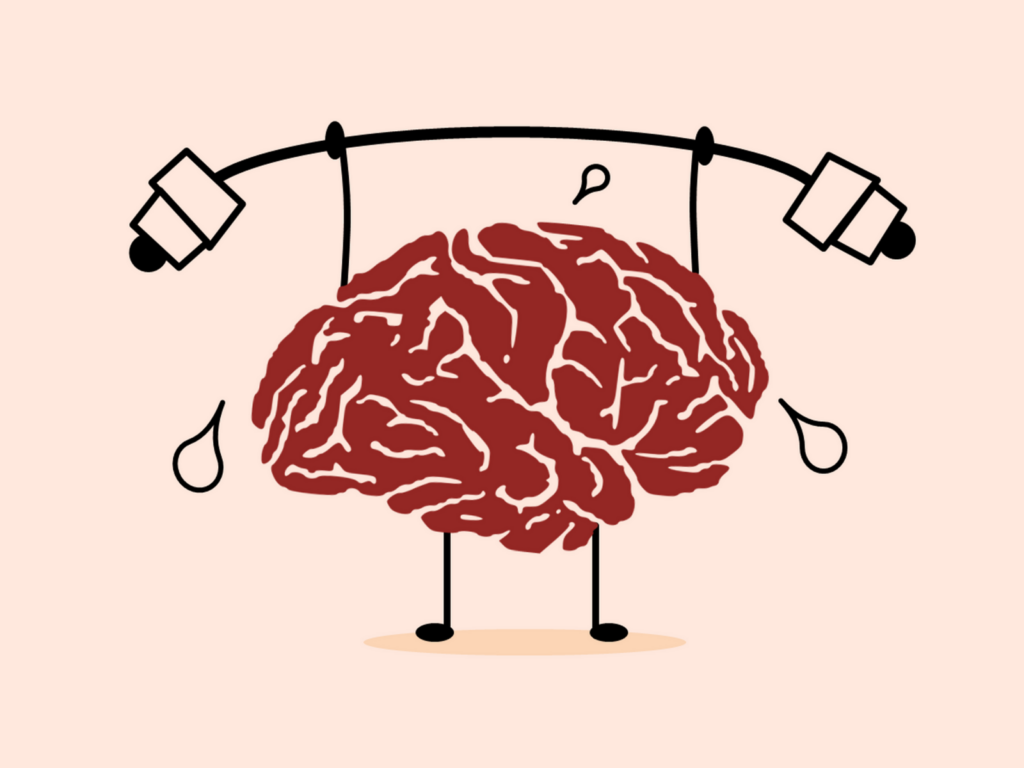Musicians face a demanding landscape of high expectations, intense competition, and diverse pressures. However, female musicians often encounter additional gender-specific challenges—ranging from performance pressures to societal expectations and gender-based biases that can intensify stress. As you read on, you’ll discover practical ways to understand these stressors from biological, psychological, and social perspectives, and learn hands-on coping strategies!
How does the body react to stress?
- Hormonal Response & Neuroendocrine Regulation
When faced with high-pressure situations, the body responds by activating the hypothalamic–pituitary–adrenal (HPA) axis, which leads to the release of cortisol—the body’s primary stress hormone. In the short term, cortisol helps increase energy and alertness, a useful boost when facing a threat. However, sustained high levels of cortisol can have several detrimental effects on health. Prolonged cortisol exposure is linked to impaired immune function—for instance, it suppresses cytokine production and reduces the activity of immune cells, leaving the body more vulnerable to infections. Additionally, chronic cortisol elevation has been associated with structural and functional changes in brain regions such as the hippocampus, which may contribute to memory deficits, increased anxiety, and a higher risk for mood disorders (Ditzen & Heinrichs, 2014).
Managing stress hormones is especially important for female musicians. Cortisol contributes to increased energy and focus during short-term challenges, a mechanism that is common to all people. However, for women, cortisol’s interaction with sex hormones such as estrogen and progesterone lead to a longer-lasting, more intense stress response. Oxytocin, a hormone involved in social bonding and mood regulation, can help buffer this effect by lowering cortisol levels and promoting calmness. While these hormones affect everyone to some degree, study have shown that their combined effects are more pronounced in women ( Ditzen& Heinrichs, 2014). This hormonal interaction highlights why regulating stress is particularly important for female performers working under constant pressure.
- Neural Mechanisms
The brain has a few key structures that help process and regulate stress. The amygdala is responsible for managing emotions and fear, while the dorsal anterior cingulate cortex (dACC) helps detect conflict and process pain ( Figure 1). These regions are key to the body’s stress regulation system and are particularly active in emotionally charged situations (Eisenberger et al., 2007). These mechanisms can be used in a lot of different ways, but research suggests that women’s amygdala reacts more to stress, especially when they’re facing social or evaluative threats. This heightened activation might make them more sensitive to stress and more likely to have performance anxiety. Understanding these neural patterns in relation to hormonal influences can offer a more complete picture of how stress affects women in high-pressure environments (Schramek, 2009; Ditzen & Heinrichs, 2014).
- Immune Function
Stress isn’t only about hormones and brain activity, it also affects the immune system. An imbalance between anti-inflammatory and pro-inflammatory responses can increase the risk of various health issues, ranging from cardiovascular problems to a weakened immune defense. In fact, chronic stress may disrupt this balance by altering key immune markers, such as high-density lipoprotein (HDL) and the soluble interleukin-6 receptor (sIL-6R) thereby further compromising the body’s defenses (Ryff, Singer, & Love, 2004). While these effects are universal, female musicians often face additional, gender-specific stressors and chronic stress, making balancing the immune response even more important to their overall health.
Feeling the Pressure? Unpacking the Psychology and Social Impact of Stress!
The pressure to be perfect and the tendency to be self-critical can significantly add to the stress experienced by female musicians. Research by Araújo et al. (2017) suggests that female musicians may be more likely to react negatively to mistakes and that self-critical perfectionist traits are significantly higher in women. On top of that, the American Institute of Stress (2024) found that women tend to have 15% higher stress levels than men. All this shows that women tend to be more perfectionistic, more prone to rumination, and exhibit higher levels of self-criticism—factors that can exacerbate stress and increase the risk of anxiety and depression
An article from Schramek (2009) shows that there are clear sex/gender differences in stress responses, underscoring the need for targeted strategies to address these unique psychological challenges. Additionally, biological factors, including the modulatory effects of estrogen and oxytocin, may amplify these differences in women. The American Institute of Stress (2025) shows that such variations suggest that men and women benefit from distinct coping methods, highlighting the importance of tailoring stress management interventions to meet each group’s specific needs.
Social and cultural factors influence stress responses in everyone, yet for female musicians, these influences can be particularly pronounced. Beyond performance pressure, societal biases and gender stereotypes—regarding appearance, behavior, and role expectations—can intensify stress and contribute to feelings of isolation. Lundberg and Frankenhaeuser (1999) found that women navigating both professional and social demands often experience a dual burden, which increases psychological strain, particularly in the absence of support. These pressures may be compounded by limited representation, perfectionistic expectations, and a lack of recognition in male-dominated settings. Fortunately, robust social support networks, such as mentoring relationships and peer groups can help deal with these challenges. Supportive environments help reduce physiological stress responses. For example, Lundberg and Frankenhaeuser (1999) found that even in high-pressure environments, supportive relationships significantly reduce stress responses, while Ditzen and Heinrichs (2014) emphasize that reducing stress is a community effort as much as an individual one. Together, these support systems provide not only practical advice but also the emotional validation necessary to counteract negative societal influences.
How to Cope and Take Action?
- The Power of Connection and Self-Care
Building emotional resilience doesn’t have to be a solo journey. Forming strong social networks through mentorship, peer support groups, or even professional counseling can make a big difference when navigating stress. These connections not only offer practical advice but also provide emotional validation, helping to break the cycle of negative thoughts and excessive rumination. On a physiological level, stress-reducing strategies such as mindfulness, relaxation routines, and self-care practices have been shown to regulate the body’s stress hormones and support emotional balance. While Ditzen and Heinrichs (2014) specifically explored how social support impacts cortisol regulation, their findings reinforce a broader message: investing in supportive relationships and healthy daily habits can significantly enhance our ability to manage both short-term stress and long-term pressure.
- Mindfulness to practice
Integrating mindfulness techniques, such as meditation, breath awareness, body scans, and gentle yoga into daily routines can help musicians manage stress more effectively. Research suggests these practices not only reduce cortisol levels but also improve emotional regulation and build long-term resilience (Diaz, 2022). For example, simple techniques like mindful breathing and body scans have been shown to reduce physical tension, quiet negative thought loops, and increase focus. Over time, these strategies help musicians develop stronger emotional balance and bodily awareness, both on stage and in daily life. The best part? You don’t need a full retreat—just a few minutes of intention each day can make your practice feel more grounded and less overwhelming.
Institutional Support: Building Resilience Together
Educational institutions, conservatories and music organizations should also take action in support of female musicians. Not just after the stress has taken its toll, but before it begins. These institutions can proactively incorporate preventative strategies into the learning environment, rather than waiting until burnout or performance anxiety requires attention. Araújo et al. (2017) note that many interventions in music education are taken after students begin to experience severe distress. Shifting to a preventative model allows musicians to learn to recognize, understand, and manage stress as early as possible, thereby improving well-being as well as enhancing the sustainability of musicians’ career longevity.
For female musicians, this support can take place in a variety of ways. Gender-sensitive mentoring programs can create space for open discussion of specific challenges, such as navigating a male-dominated orchestra, self-image pressures, or balancing multiple roles inside and outside of music. Workshops that address performance anxiety from a gender perspective, group sessions that focus on peer connection and shared coping strategies, and specialized avenues of support for discussing gender-related experiences can enhance resilience (Ascenso et al., 2017). Organizations that actively promote representation, inclusion, and psychological safety can help female musicians feel noticed, supported, and empowered to thrive in high-pressure musical environments.
To Conclude…
Stress for female musicians is a multifaceted challenge shaped by physical, psychological, and social factors. While all musicians deal with demanding performance expectations, women in music often face added, gender-specific pressures like being judged for their appearance, striving for perfection shaped by social norms, or struggling with underrepresentation in leadership roles. For instance, a study by Wapnick et al. (1997) found that physical attractiveness significantly influenced how vocal performances were rated,especially when visuals were involved suggesting that female musicians might feel pressure not just to sound good, but to look a certain way too.
Addressing these issues requires targeted strategies on multiple levels. Individually, cultivating positive thinking, practicing self-care, and building strong social relation can help regulate emotions and foster resilience. At the institutional level, strategies like gender-sensitive mentorship, inclusive performance environments, and early stress management education can play a crucial role in easing these burdens. By acknowledging and actively addressing these challenges, the music community can better support the well-being and growth of female musicians—not just by helping them cope, but by empowering them to thrive.
Whether it’s through taking a few mindful minutes each day or advocating for stronger support systems at your school or organization, every step counts. So, what strategies will you try next to ensure your music, and your life, hits the right note?
References
American Institute of Stress. (2024, June 4). Who gets stressed? Women stress. https://www.stress.org/who-gets-stressed/women-stress/
American Institute of Stress. (2025, January 22). Why men and women need different stress strategies. https://www.stress.org/news/why-men-and-women-need-different-stress-strategies/
Araújo, L. S., Wasley, D., Perkins, R., Atkins, L., Redding, E., Ginsborg, J., & Williamon, A. (2017). Fit to perform: An investigation of higher education music students’ perceptions, attitudes, and behaviors toward health. Frontiers in Psychology, 8, 1558. https://doi.org/10.3389/fpsyg.2017.01558
Ascenso, S., Williamon, A., & Perkins, R. (2017). Understanding the wellbeing of professional musicians through the lens of positive psychology. Psychology of Music, 45(1), 65–81. https://doi.org/10.1177/0305735616646864
Diaz, F. M. (2022). Mindfulness. In G. E. McPherson (Ed.), The Oxford handbook of music performance: Volume 2. Enhancements, health and wellbeing, science, and innovations (pp. 65–83). Oxford University Press. https://doi.org/10.1093/oxfordhb/9780190058869.013.4
Ditzen, B., & Heinrichs, M. (2014). Psychobiology of social support: The social dimension of stress buffering. Restorative Neurology & Neuroscience, 32(1), 149–162. https://doi.org/10.3233/RNN-139008
Eisenberger, N. I., Taylor, S. E., Gable, S. L., Hilmert, C. J., & Lieberman, M. D. (2007). Neural pathways link social support to attenuated neuroendocrine stress responses. NeuroImage, 35(4), 1601–1612. https://doi.org/10.1016/j.neuroimage.2007.01.038
Lundberg, U., & Frankenhaeuser, M. (1999). Stress and workload of men and women in high-ranking positions. Journal of Occupational Health Psychology, 4(2), 142–151.
Ryff, C. D., Singer, B. H., & Love, G. D. (2004). Positive health: Connecting well-being with biology. Philosophical Transactions of the Royal Society B: Biological Sciences, 359(1449), 1383–1394. https://doi.org/10.1098/rstb.2004.1521
Schramek, T. E. (2009). Sex differences in stress. Mammoth Magazine, (6), 1–5. https://humanstress.ca/item/mammoth-magazine-issue-6-winter-2009/
Shoebridge, A., & Osborne, M. S. (2025). Wellbeing for young elite musicians: Development of a health protocol from a student perspective. Frontiers in Psychology, 16, 1401511.https://doi.org/10.3389/fpsyg.2025.1401511
Wapnick, J., Darrow, A. A., Kovacs, J., & Dalrymple, L. (1997). Effects of physical attractiveness on evaluation of vocal performance. Journal of Research in Music Education, 45(3), 470–479. https://doi.org/10.2307/3345540
Images
Brain Exercising [Image]. (n.d.). Wikimedia Commons. https://commons.wikimedia.org/wiki/File:Brain_Exercising.png
Du, J., Diao, H., Zhou, X., Zhang, C., Chen, Y., Gao, Y., & Wang, Y. (2022). Post‐traumatic stress disorder: A psychiatric disorder requiring urgent attention. Medical Review, 2(3), 219–243. https://doi.org/10.1515/mr-2022-0012
Hands reaching cooperation (n.d.). Pixabay. https://pixabay.com/zh/vectors/hands-reaching-cooperation-8731277/
StockCake. (n.d.). Sunset yoga session [Photograph]. https://stockcake.com/i/sunset-yoga-session_694269_622982




